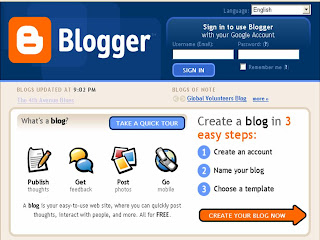Listed below are 23 Things (or activities) that you can do on the web to explore and expand your knowledge of the Internet and Web 2.0 tools.
Summer 2010 SessionPublish Post
Start Date: Monday, June 7, 2010
Blog posts must be dated on or after this date.
Completion Deadline: Monday, August 9, 2010
All 23 Things must be be completed by 11:59 pm. No partial credit will be given.
Spring Branch employees only -- If finished by August 9, 2010 Spring Branch employees will receive 18 hours off-contract PDLC credit. The PDLC course # is 1671.13464
Out of district players -- If finished by August 9, 2010 players from outside SBISD will receive a certificate indicating 18 hours of professional development participation.
For more information, contact vaughn.branom@springbranchisd.com
Face-to-Face (F2F) Recess
These F2F encounters will take place at the Media Center on the SBEC Campus.
Come-&-go informal assistance will be available from 9:00-3:00. Bring your laptop!
Tuesday, June 22nd
Wednesday, July 7th
Thursday, July 15th
Tuesday, July 20th
Ready! Set! Play! Begin here.
(Be sure and click on the hot links. They tell you what to do!)
23 Things*
Week 1: Life Long Learning
- Thing #1: Read this blog and find out about the program.
- Thing #2: Discover a few pointers from lifelong learners and learn how to nurture your own learning process. You will write a post about this after creating your blog.
Week 2: Blogging
(Remember the weeks are just guidelines and markers for PDLC. You may use your own timeline as long as you finish on time! You do NOT have to have things done by any date EXCEPT the final date -- August 9th)
- Thing #3: Set up your own blog, create an avatar, and add a post about what you did.
- Thing #4: Register your blog and begin your Library2Play journey. (To be officially registered you must have posts written for Thing 2 and Thing 3.)
Week 3: Photos & Images
- Thing #5: Explore Flickr and learn about this popular image hosting site.
- Thing #6: Have some fun and discover some mashups and 3rd party sites.
- Thing #7: Learn about all the cool tools that Google has to offer.
Week 4: RSS & Newsreaders
- Thing #8: Learn about RSS feeds and set up your own newsreader account.
- Thing #9: Locate a few useful library-related blogs and/or news feeds.
Week 5: Hodge-Podge
- Thing #10: Play around with an online image generator.
- Thing #11: Take a look at LibraryThing and catalog some of your books.
- Thing #12: Creating Community Through Commenting
Week 6: Tagging, Folksonomies & Technorati
- Thing #13: Learn about tagging and discover Delicious, a social bookmarking site.
- Thing #14: Explore Technorati and learn how tags work with blog posts.
- Thing #15: Read a few perspectives on Web 2.0, Library 2.0, and the future of libraries.
Week 7: Wikis & Rollyo
- Thing #16: Learn about wikis and discover some innovative ways that libraries are using them. Add an entry to the Learning 2.0 Sandbox wiki.
- Thing #17: Rollyo
Week 8: Online Applications & Tools
- Thing #18: Take a look at some online productivity tools (word processing, spreadsheets).
- Thing #19: Explore the Web 2.0 Awards List.
Week 9: Videos, Podcasts, & Nings
- Thing #20: Explore YouTube And TeacherTube and how to download and embed the videos.
- Thing #21: Find, create, and use podcasts and videocasts.
- Thing #22: Explore Nings.
- Thing #23: Summarize your thoughts about this program.
* Note: This project is loosely based upon the website 43Things (which allows you to set and track personal goals) and the Stephen Abram article titled 43 Things I (or You) might want to do this year (Information Outlook - Feb 2006). Our adaptation comes largely from School Library Learning 2.0 An online learning program for CSLA members and friends and Learning 2.0 Through Play by Mary Woodard Library Director at Mesquite ISD, Texas.







